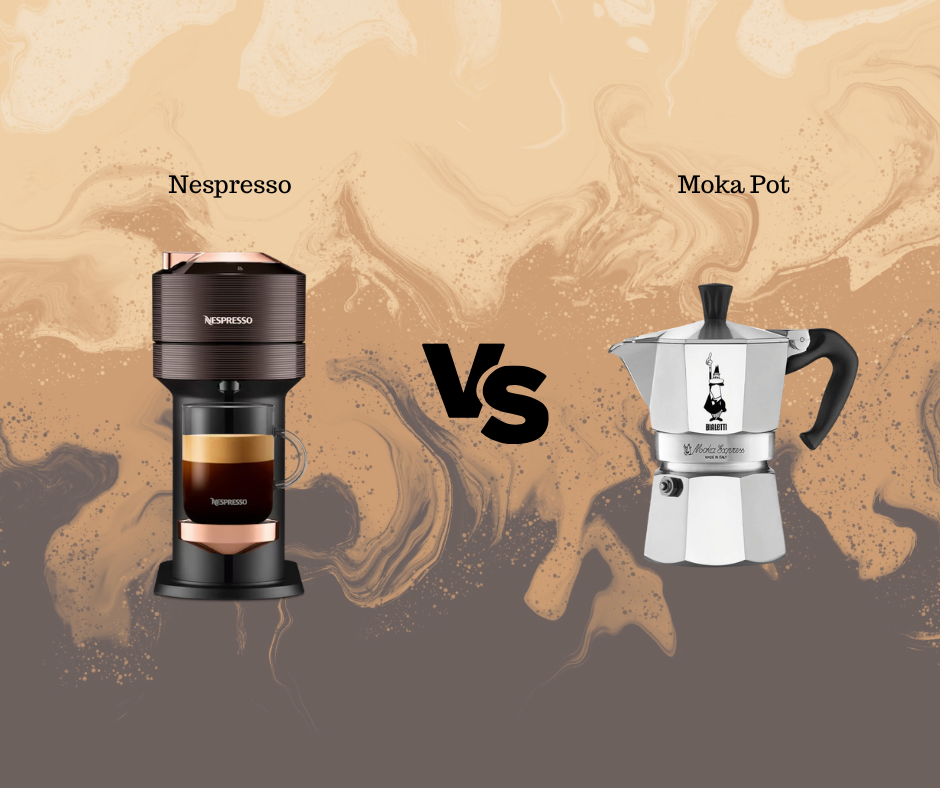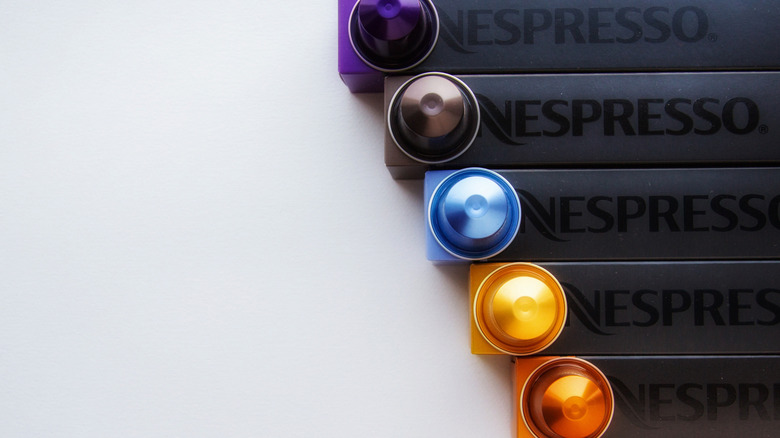Espresso, the rich and intense coffee that many of us rely on to jumpstart our mornings or power through a long day, has become a staple in coffee culture worldwide. From the bustling cafes of Italy to the hipster coffee shops in Sacramento, this concentrated caffeine shot has carved out a place in the hearts of coffee enthusiasts. But as much as we love that bold, aromatic kick, there’s a pressing question: how many espresso shots in a day before it becomes too much?
As espresso’s popularity continues to soar, so do concerns about caffeine consumption. While a single shot can provide the perfect boost, multiple shots throughout the day can add up quickly, raising questions about health effects and safe consumption limits. This article dives into the nuances of espresso consumption, providing you with the insights you need to enjoy your favorite drink responsibly.

Understanding Espresso and Caffeine
Espresso, a coffee brewing method that originated in Italy, is known for its bold flavor and rich aroma. It’s made by forcing a small amount of nearly boiling water through finely-ground coffee beans. The result is a concentrated coffee shot with a layer of crema on top, giving it a distinctive taste and texture.
When it comes to caffeine content, espresso often gets a reputation for being incredibly potent. However, the reality is a bit more nuanced. A standard espresso shot (about 1 ounce) typically contains around 63 milligrams of caffeine. In comparison, a regular 8-ounce cup of brewed coffee contains approximately 95 milligrams of caffeine. This means that, ounce for ounce, espresso has more caffeine, but because the serving size is smaller, the total caffeine content per serving can be less than a full cup of coffee.
Espresso’s concentrated nature means that you can consume smaller amounts to get a similar caffeine kick as a larger cup of coffee. This is why many people opt for espresso when they need a quick and efficient energy boost. However, it’s essential to be mindful of how many shots you consume throughout the day, as the cumulative caffeine content can quickly add up.
What is Espresso?
Espresso is a concentrated form of coffee brewed by forcing a small amount of hot water under high pressure through finely-ground coffee beans. This method produces a small, strong shot of coffee with a rich flavor and a layer of creamy foam on top, known as crema. Unlike drip coffee, which relies on gravity to pull water through the coffee grounds, espresso is made using pressure, resulting in a more intense flavor profile and a thicker consistency.

The origins of espresso date back to the early 20th century in Italy. In 1901, Luigi Bezzera, an Italian inventor, who invented the first steam-driven coffee machine, which significantly reduced the brewing time compared to traditional methods. This innovation was initially intended to speed up coffee preparation for busy workers, making it possible to enjoy a quick, strong coffee on the go. Over the years, the design and technology behind espresso machines evolved, leading to the modern espresso machines we use today.
Espresso quickly gained popularity in Italy and eventually spread to other parts of Europe and the world. Its intense flavor and quick preparation time made it a favorite among coffee enthusiasts, leading to the development of various espresso-based drinks like cappuccinos, lattes, and macchiatos. Today, espresso is a cornerstone of coffee culture, celebrated for its robust taste and versatility.
Caffeine Content in Espresso
One of the most intriguing aspects of espresso is its caffeine content. Despite its small size, a single shot of espresso packs a considerable caffeine punch. On average, a standard shot of espresso, which is about 1 ounce (30 milliliters), contains approximately 63 milligrams of caffeine. This concentration is higher per ounce compared to other brewing methods, making espresso a popular choice for those seeking a quick and effective caffeine boost.
Espresso’s caffeine content can vary slightly depending on several factors, including the type of coffee bean used, the grind size, and the brewing time. Arabica beans, commonly used for espresso, tend to have less caffeine than Robusta beans. However, the precise preparation of espresso ensures a consistent and robust flavor, delivering a reliable caffeine dose in each shot.

Comparatively, an 8-ounce cup of brewed coffee contains around 95 milligrams of caffeine. Although it has more caffeine overall due to the larger serving size, espresso’s higher caffeine concentration per ounce is what gives it its reputation for being strong and potent. This makes it essential to be mindful of how many shots you consume in a day, as the total caffeine intake can add up quickly.
When it comes to caffeine from 3 espresso shots, it’s quite intriguing. Three standard shots, each packing around 63 milligrams of caffeine, total approximately 189 milligrams. This amount can provide a substantial boost in alertness and focus. However, as with all things caffeinated, moderation ensures you enjoy your espresso without going overboard on caffeine intake.
Health Implications of Espresso
Caffeine, the primary active ingredient in espresso, is a natural stimulant that affects the central nervous system. When you consume caffeine, it quickly absorbs into the bloodstream and travels to the brain. Here, it blocks the action of adenosine, a neurotransmitter that promotes relaxation and sleepiness. As a result, caffeine helps you feel more alert and awake.
In addition to increased alertness, caffeine has several other effects on the body. It can improve mood, boost metabolism, and enhance physical performance. Many athletes use caffeine as an ergogenic aid to increase endurance and reduce the perception of effort during exercise. However, the stimulant effects of caffeine can also lead to jitteriness, anxiety, and disrupted sleep if consumed in large amounts.
Specific Impacts of Espresso
When it comes to espresso, its high caffeine concentration means that even a small amount can have a significant impact. For many people, a shot of espresso provides just the right amount of caffeine to kickstart the day or provide an afternoon pick-me-up. However, due to its potency, it’s essential to be mindful of how much espresso you consume.
Moderate espresso consumption can offer several health benefits, including improved cognitive function, enhanced physical performance, and a lower risk of certain diseases such as Parkinson’s and Alzheimer’s. The antioxidants found in coffee, including espresso, also contribute to overall health by combating oxidative stress and inflammation.
On the flip side, excessive espresso consumption can lead to negative health effects. Too much caffeine can cause insomnia, increased heart rate, and elevated blood pressure. It can also exacerbate anxiety and contribute to digestive issues like acid reflux. For most adults, consuming up to 400 milligrams of caffeine per day—roughly equivalent to six shots of espresso—is considered safe. However, individual tolerance to caffeine can vary, so it’s crucial to listen to your body and adjust your intake accordingly.
Health, Caffeine Effects
Understanding the health implications of espresso and its caffeine content can help you enjoy this beloved coffee drink in a way that supports your overall well-being. By balancing your espresso consumption with other dietary and lifestyle factors, you can reap the benefits without experiencing the downsides of too much caffeine.
Benefits of Moderate Caffeine Intake
Wondering if espresso is good for you? Moderate caffeine consumption, including that from espresso, offers a range of health benefits that can enhance your daily life. Here are some key advantages:

- Improved Energy and Focus: One of the most well-known benefits of caffeine is its ability to increase alertness and reduce fatigue. By blocking the neurotransmitter adenosine, caffeine helps you feel more awake and energized. This boost in energy can be particularly beneficial in the morning or during that mid-afternoon slump. Improved focus and concentration are also significant benefits, helping you stay productive and attentive in both work and personal tasks.
- Enhanced Physical Performance: Caffeine is a popular performance enhancer among athletes and fitness enthusiasts. It stimulates the release of adrenaline, the “fight or flight” hormone, which can prepare your body for physical exertion. Caffeine also helps break down body fat, making free fatty acids available as fuel. This combination can enhance endurance, strength, and overall physical performance.
- Cognitive Function and Mental Health: Moderate caffeine intake has been linked to improved cognitive function. It can enhance various aspects of brain function, including memory, mood, reaction times, and general mental function. Some studies suggest that regular caffeine consumption might protect against cognitive decline and reduce the risk of neurodegenerative diseases like Parkinson’s and Alzheimer’s.
- Antioxidant Properties: Coffee, including espresso, is rich in antioxidants, which help fight free radicals in the body. These antioxidants can reduce inflammation and lower the risk of certain chronic diseases. The antioxidants in coffee have also been associated with a lower risk of liver disease, certain types of cancer, and heart disease.
- Metabolism and Weight Management: Caffeine can boost your metabolic rate, helping you burn more calories even at rest. This effect can contribute to weight management and fat loss, making moderate caffeine consumption a useful tool in a balanced diet and exercise regimen.
- Health, Caffeine Effects: Understanding the health benefits of moderate caffeine intake can help you appreciate your daily espresso shots even more. While it’s essential to enjoy caffeine in moderation, these benefits highlight how a reasonable amount of caffeine can positively impact your health and well-being.
Risks of Excessive Caffeine Intake
While moderate caffeine consumption offers various health benefits, excessive intake can lead to several adverse effects. It’s crucial to understand these risks to manage your caffeine consumption effectively and maintain your health.
- Insomnia and Sleep Disruptions: One of the most immediate and noticeable effects of too much caffeine is its impact on sleep. Caffeine can interfere with your ability to fall asleep and stay asleep, leading to insomnia. This is because caffeine blocks adenosine receptors, which are responsible for promoting sleepiness. Consuming high amounts of caffeine, especially later in the day, can disrupt your sleep cycle and reduce the quality of your rest, leaving you feeling tired and irritable the next day.
- Increased Heart Rate and Blood Pressure: Excessive caffeine intake can stimulate the heart, leading to an increased heart rate (tachycardia) and elevated blood pressure. For individuals with preexisting heart conditions or hypertension, this can pose significant health risks. High doses of caffeine can also cause palpitations, making you feel like your heart is racing or pounding.
- Anxiety and Nervousness: Caffeine is a stimulant that can increase alertness, but consuming too much can lead to heightened anxiety and nervousness. This effect is particularly pronounced in people who are sensitive to caffeine or already prone to anxiety disorders. Symptoms can include restlessness, jitteriness, and even panic attacks in severe cases.
- Digestive Issues: Caffeine stimulates the production of stomach acid, which can lead to digestive issues such as acid reflux, heartburn, and stomach ulcers. Drinking large amounts of coffee, including espresso, on an empty stomach can exacerbate these problems and cause discomfort.
- Dependency and Withdrawal: Regular consumption of high amounts of caffeine can lead to dependency, where your body becomes accustomed to its stimulant effects. When you try to cut back or stop consuming caffeine, you might experience withdrawal symptoms such as headaches, fatigue, irritability, and difficulty concentrating. These symptoms can make it challenging to reduce caffeine intake gradually.
Safe Limits for Espresso Consumption
Curious if espresso healthy for you? To enjoy the benefits of espresso without experiencing its potential adverse effects, it’s important to adhere to safe consumption guidelines. Health experts provide recommendations based on scientific research to help you manage your caffeine intake effectively.
General Guidelines for Caffeine Consumption
For most healthy adults, the Food and Drug Administration (FDA) recommends a maximum caffeine intake of 400 milligrams per day. This amount is roughly equivalent to four 8-ounce cups of brewed coffee or about six shots of espresso. However, individual tolerance to caffeine can vary, so it’s important to listen to your body and adjust your intake accordingly.
Safe Espresso Shot Consumption
Given that a single shot of espresso contains approximately 63 milligrams of caffeine, you can safely consume up to six shots per day within the 400-milligram limit. Here are some key points to consider:
- Spread Your Intake: Instead of consuming multiple espresso shots in one sitting, spread your espresso shots throughout the day to avoid a sudden spike in caffeine levels and reduce the risk of jitteriness and anxiety.
- Monitor Your Response: Pay attention to how your body responds to caffeine. If you experience symptoms like insomnia, increased heart rate, or digestive issues, consider reducing your intake.
- Consider Other Sources: Remember that caffeine is also present in other beverages and foods, such as tea, energy drinks, and chocolate. Account for these sources when calculating your total daily caffeine intake.
Special Considerations
Certain groups of people should be more cautious with their caffeine consumption:
- Pregnant Women: The American College of Obstetricians and Gynecologists (ACOG) advises pregnant women to limit their caffeine intake to 200 milligrams per day, equivalent to about three shots of espresso.
- Individuals with Health Conditions: People with heart conditions, anxiety disorders, or gastrointestinal issues should consult with their healthcare provider about safe caffeine limits.
- Children and Adolescents: Caffeine guidelines for younger individuals are more stringent, with the American Academy of Pediatrics recommending minimal caffeine intake for children and adolescents.
Recommendations by Health Organizations
Understanding safe caffeine consumption involves referring to guidelines provided by reputable health organizations. Here are some specific recommendations to help you manage your espresso intake responsibly:
Food and Drug Administration (FDA)
The FDA suggests that for most healthy adults, consuming up to 400 milligrams of espresso shots in a day is generally safe. This guideline translates to about four 8-ounce cups of brewed coffee or roughly six shots of espresso. The FDA emphasizes that caffeine sensitivity varies among individuals, so it’s important to monitor how your body reacts to different levels of caffeine intake.
American College of Obstetricians and Gynecologists (ACOG)
For pregnant women, ACOG recommends limiting caffeine intake to 200 milligrams per day. This amount is equivalent to about two 8-ounce cups of brewed coffee or three shots of espresso. Excessive caffeine consumption during pregnancy has been linked to increased risks of miscarriage and low birth weight, making it crucial for expectant mothers to adhere to these guidelines.
American Academy of Pediatrics (AAP)
The AAP advises that children and adolescents should have minimal caffeine intake. They recommend that teenagers aged 12-18 should limit their caffeine consumption to no more than 100 milligrams per day, which is approximately one 8-ounce cup of brewed coffee or one and a half shots of espresso. Younger children are advised to avoid caffeine altogether due to its potential impact on their developing bodies and minds.
European Food Safety Authority (EFSA)
The EFSA provides similar guidelines to the FDA, stating that a daily intake of up to 400 milligrams of caffeine is safe for most adults. They also recommend that pregnant and breastfeeding women limit their caffeine intake to 200 milligrams per day. For children and adolescents, the EFSA suggests a maximum caffeine intake of 3 milligrams per kilogram of body weight.
World Health Organization (WHO)
The WHO does not specify exact caffeine limits but emphasizes the importance of moderating caffeine intake as part of a balanced diet. They encourage individuals to be aware of their total daily caffeine consumption from all sources, including coffee, tea, energy drinks, and certain medications.
Factors Affecting Caffeine Sensitivity
Caffeine sensitivity varies widely among individuals, and several factors can influence how much espresso you can safely consume. Understanding these factors can help you tailor your caffeine intake to your specific needs and avoid potential health issues.
Body Weight
Body weight plays a significant role in determining caffeine sensitivity. Generally, individuals with a higher body weight can tolerate more caffeine than those with a lower body weight. This is because caffeine is distributed throughout the body’s water content, so a larger body mass can dilute its concentration. For example, a 200-pound person might be able to consume more espresso without experiencing adverse effects compared to a 100-pound person.
Tolerance
Regular caffeine consumers often develop a tolerance, meaning their bodies become accustomed to its effects over time. This tolerance can lead to a need for higher doses to achieve the same level of alertness and energy. However, this increased tolerance also means that individuals might not experience the same intensity of negative side effects, such as jitters or anxiety, with higher caffeine consumption. It’s important to note that while tolerance can reduce immediate side effects, it does not eliminate the long-term risks associated with high caffeine intake.
Health Conditions
Certain health conditions can affect how your body responds to caffeine. For instance:
- Cardiovascular Issues: Individuals with heart conditions, such as arrhythmias or hypertension, should be cautious with caffeine intake, as it can increase heart rate and blood pressure.
- Anxiety Disorders: People prone to anxiety or panic attacks may find that caffeine exacerbates their symptoms. Reducing or eliminating caffeine can help manage these conditions.
- Gastrointestinal Problems: Caffeine can stimulate stomach acid production, potentially worsening conditions like acid reflux or ulcers.
Age
Age can also impact caffeine sensitivity. Children and adolescents are generally more sensitive to caffeine’s effects, which is why health organizations recommend lower intake limits for younger populations. Older adults might experience prolonged effects of caffeine due to slower metabolism and changes in body composition, necessitating careful monitoring of intake.
Medications
Certain medications can interact with caffeine, altering its effects. For example, some antibiotics and antidepressants can increase caffeine’s potency, leading to heightened side effects. Conversely, other medications might reduce caffeine’s effectiveness. Always consult with a healthcare provider about potential interactions if you are taking any prescription or over-the-counter medications.
Genetics
Genetics play a role in how your body metabolizes caffeine. Some people have genetic variations that cause them to process caffeine more quickly or slowly than others. Those who metabolize caffeine slowly may experience prolonged effects and greater sensitivity, while fast metabolizers might be able to handle higher doses without issue.
How to Enjoy Espresso Safely
Espresso is a delightful pick-me-up, but it’s essential to keep your caffeine consumption in check. Here are some tips to enjoy your espresso safely:

- Stick to the Limit: Aim for no more than 3-4 shots of espresso per day to stay within safe caffeine intake limits.
- Spread It Out: Enjoy your espresso shots at different times of the day rather than all at once to avoid caffeine spikes.
- Stay Hydrated: Drink plenty of water throughout the day to stay hydrated and balance the diuretic effects of caffeine.
- Pair with Food: Having a snack or meal with your espresso can help moderate its impact on your stomach and metabolism.
- Listen to Your Body: If you start feeling jittery, anxious, or have trouble sleeping, it might be a sign to cut back.
Alternatives to Reducing Espresso Intake
If you’re looking to cut down on your espresso intake, here are some tasty and practical alternatives:
- Mix with Milk: Turn your espresso into a latte or cappuccino by adding steamed milk, reducing the overall caffeine content per cup.
- Decaffeinated Options: Switch to decaf espresso for a similar flavor without the caffeine hit.
- Half-Caf: Mix regular espresso with decaf to reduce your caffeine intake gradually.
- Herbal Teas: Replace one or more espresso shots with herbal teas like chamomile or peppermint, which are naturally caffeine-free.
- Cold Brew: If you enjoy cold beverages, try cold brew coffee, which often has lower caffeine content when diluted.
Signs You Might Be Consuming Too Much Espresso
Overindulging in espresso can lead to several unwanted side effects. Watch for these signs to know if you’re overdoing it:
- Jitters and Restlessness: Feeling unusually shaky or restless could mean you’ve had too much caffeine.
- Insomnia: Trouble falling or staying asleep is a common sign of excessive caffeine intake.
- Increased Heart Rate: A racing heart or palpitations can be a signal to cut back on espresso.
- Anxiety: Elevated anxiety or nervousness might be linked to high caffeine consumption.
- Digestive Issues: Experiencing stomach aches, acid reflux, or frequent bathroom trips can indicate you’re drinking too much espresso.
Disclosure: Our blog contains affiliate links to products. We may receive a commission for purchases made through these links. However, this does not impact our reviews and comparisons. We try our best to keep things fair and balanced, in order to help you make the best choice for you.






2 Responses